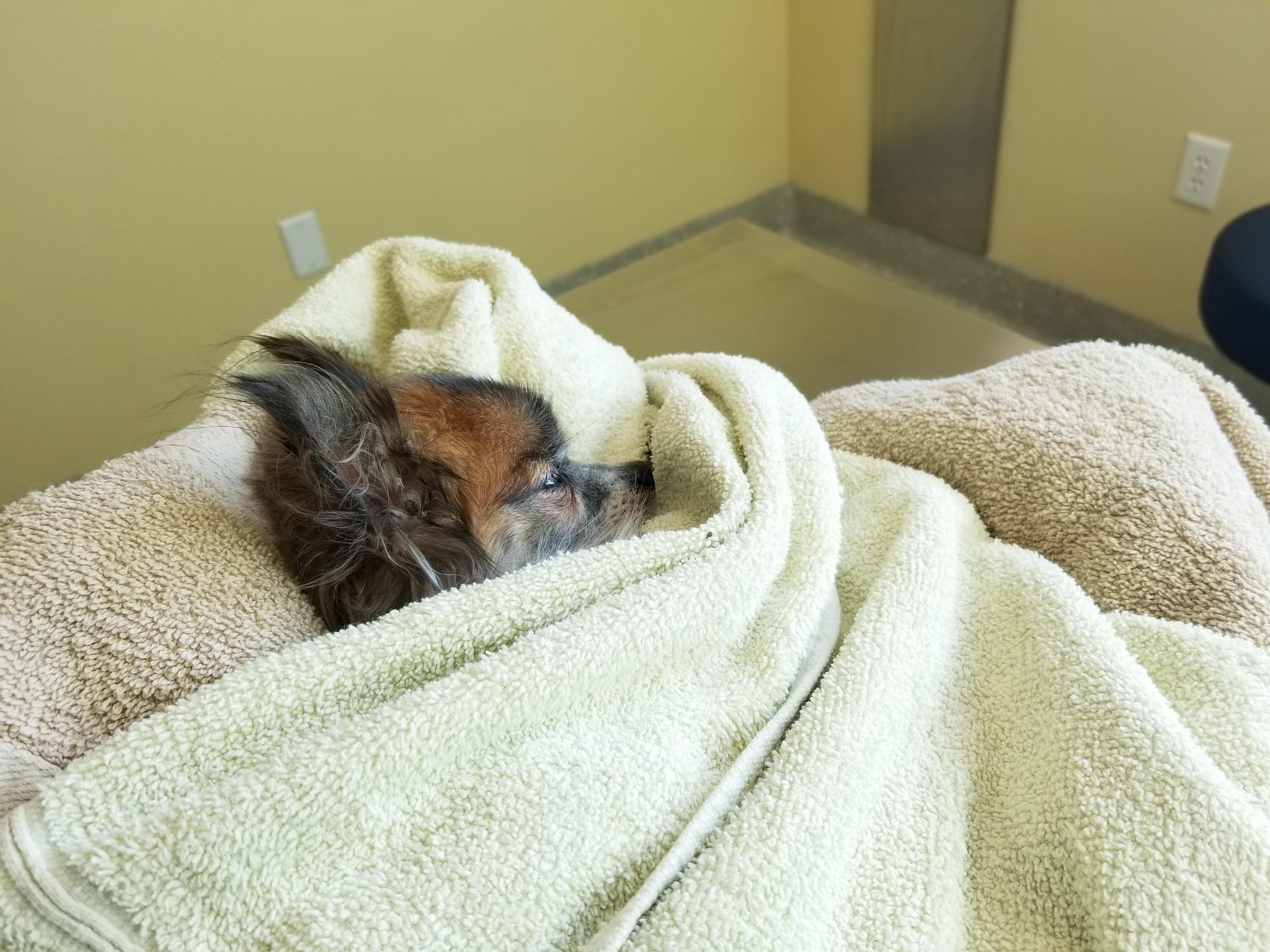Would you forgive me for doing a grab-bag sort of blog post occasionally? I get a lot of mail asking for updates on topics I’ve started, here or in the print version of the magazine, and this is as handy a place as any to answer questions.
The 2019 Dry Dog Food Review

The February issue – the one containing our annual discussion and review of dry dog foods – has been published, and as is often the case, we missed a company or two that should have been included on our list of approved foods. WHEN will we be perfect? Not this year, sadly. We will update the online version of the list as errors or omissions are detected and include corrections in the March issue.
The Mange Puppies
While the Camp Fire was still burning, I took on a litter of puppies who were brought into my local shelter, skeletal with malnutrition and looking like burn victims, with little hair and red, inflamed skin. (I blogged about them here and here and here.) They hadn’t been burned at all; they had something far more prosaic: demodectic mange (and I quickly asked one of our veterinarian contributors to prepare an article for us on the topic of mange; the resulting article appears in the February 2019 issue).
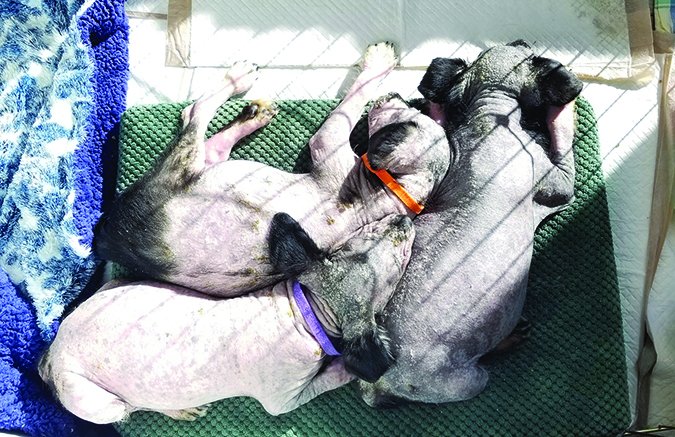
Two of the puppies succumbed – one to parvovirus, against which they had been vaccinated, but the vaccination had not yet conveyed protection; one spent days receiving veterinary care for a perplexing set of symptoms that slowly paralyzed her and made her unable to eat or drink. She was euthanized without a definite diagnosis – meant to humanely end her suffering, but upsetting and haunting for me and the friends who helped care for her.
Four of the remaining five puppies, however, gained weight, got stronger, grew their hair back, and made their way onto the adoption row at my local shelter, where each was quickly adopted into a loving home! I met only one adopting party – a very nice couple from a town about an hour away. But I had assurances from the shelter staff that each of the four had found a very nice home indeed.

I’m still fostering the last puppy. Odin, as I am calling him, was the biggest of the puppies from the day I met them, and less affected by the mange than the rest of his littermates. He had about 40 percent of his hair when I first met them; the rest had from about 10 to 20 percent of their hair. Unfortunately, though, he has been dealing with other health problems that necessitate more care and time being fostered.
The first thing that happened was he developed a big, swollen eye, which quickly turned blue with inflammation (I wrote about this in more detail here). This has been diagnosed as idiopathic (but possibly immune-deficient) uveitis. We’ve had three visits to the ophthalmology department at the Veterinary Medical Teaching Hospital (VMTH) at UC Davis, and have another scheduled for this coming Monday. The doctors seem confident that he hasn’t lost sight in that eye, and that continuing treatment should “defog the windshield” (as the clinician who has seen him the last two visits put it).
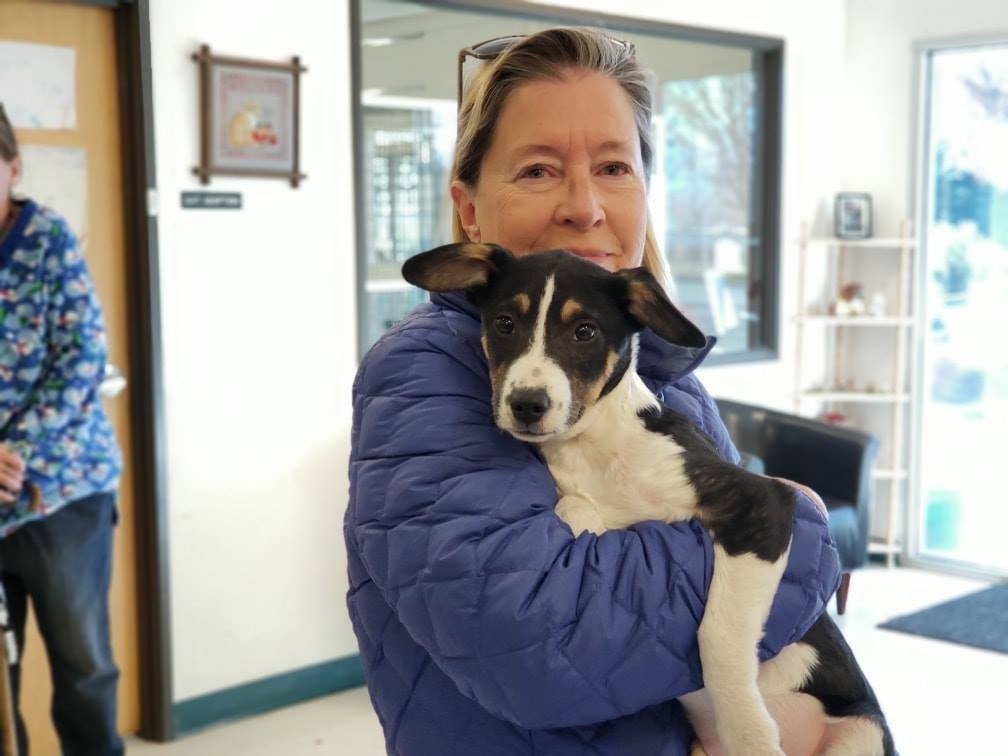
However, he developed two new issues. The first was a bit of a limp. It was very mild at first, and worse when he first got up from a nap than it was after he had been walking around for a bit. The veterinary ophthalmologist who examined him last did a brief lameness exam, flexing his joints to see what, exactly, was hurting, and he expressed the opinion that it was Odin’s right elbow that was bothering him – and he correctly predicted that the symptom might worsen. Odin has been on a low dose of a steroid(prednisone) – prescribed as part of the treatment to reduce the inflammation in his eye – and when that dose was reduced (and is now even lower, as we are now tapering him off of the drug altogether), the limp increased visibly. So, he’s scheduled for some x-rays so we can try to figure out what’s up with his apparent joint pain.
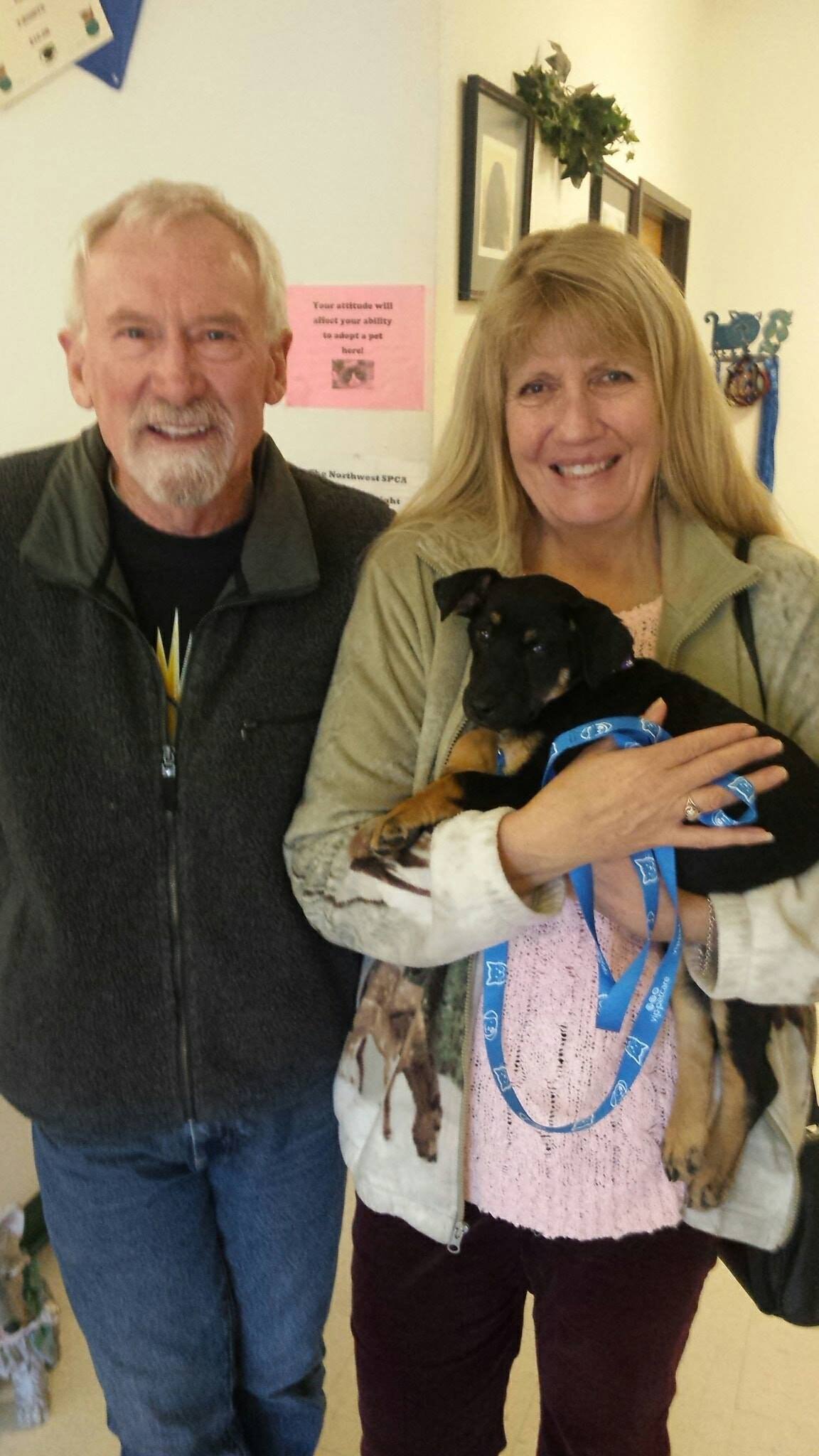
While the prednisone was effectively reducing the inflammation in Odin’s eye (and elbow), it also left the puppy vulnerable to infection. Last week, he developed a hacking cough overnight, and though he was eating and cheerful and had no other symptoms, the cough was so severe that I was afraid he had something stuck in his throat. We ended up at the ER in the wee hours. After an exam and x-rays, the vet diagnosed, instead, another round of “kennel cough” (the whole litter had been treated for this early on). He thought it was likely that the prednisone prevented Odin’s immune system from protecting him from another viral or possibly bacterial agent that caused a bronchial infection.
The strong cough (and resulting gagging) also inflamed his esophagus, so Odin was prescribed a new round of antibiotics, as well as two medications meant to soothe his inflamed esophagus and prevent the irritation from developing into megaesophagus, and a strong cough syrup (the kind where you must show your driver’s license to receive it!).
So, I take Odin and our Tupperware box full of medications and eye drops everywhere I go. This week, it’s three different eye drops (one is two times a day, the other two are three times a day) and four oral medications (it was five, but he doesn’t need the cough syrup any more). Next week, he should be off all of the oral meds and we will see about the medications for the eye – which is s-l-o-w-l-y looking better and less blue. And we will see what the x-rays say about his joints.
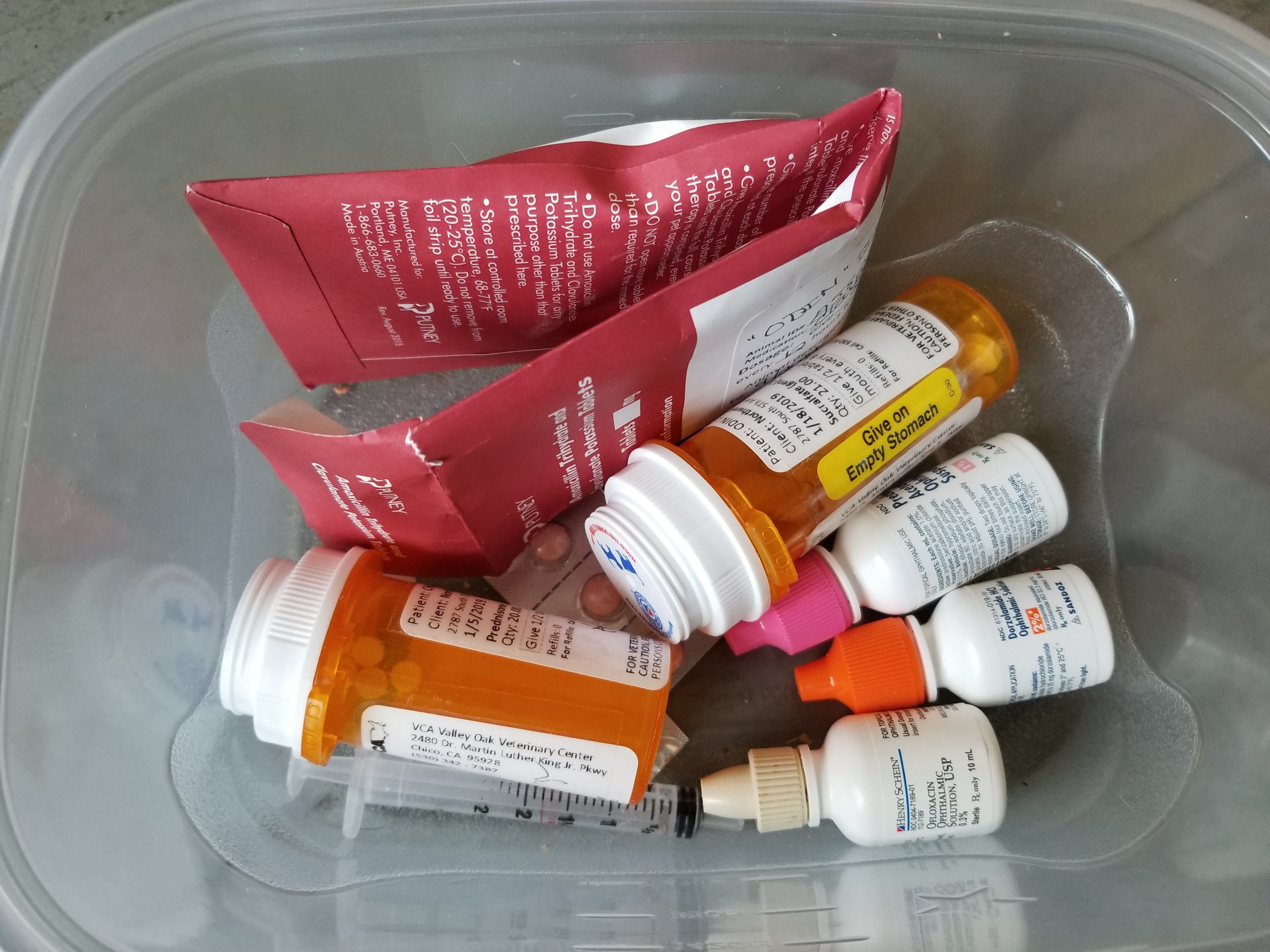
NO, I’m not keeping him!! He’s a darling little guy and he’s learning a ton and he loves my younger dog (and vice versa) – and he’s going to be somebody’s DREAM DOG someday. He’s calm and friendly and rides (and waits) well in cars, but I want him to have a home of his own someday, when his medical issues are resolved or at least under control.
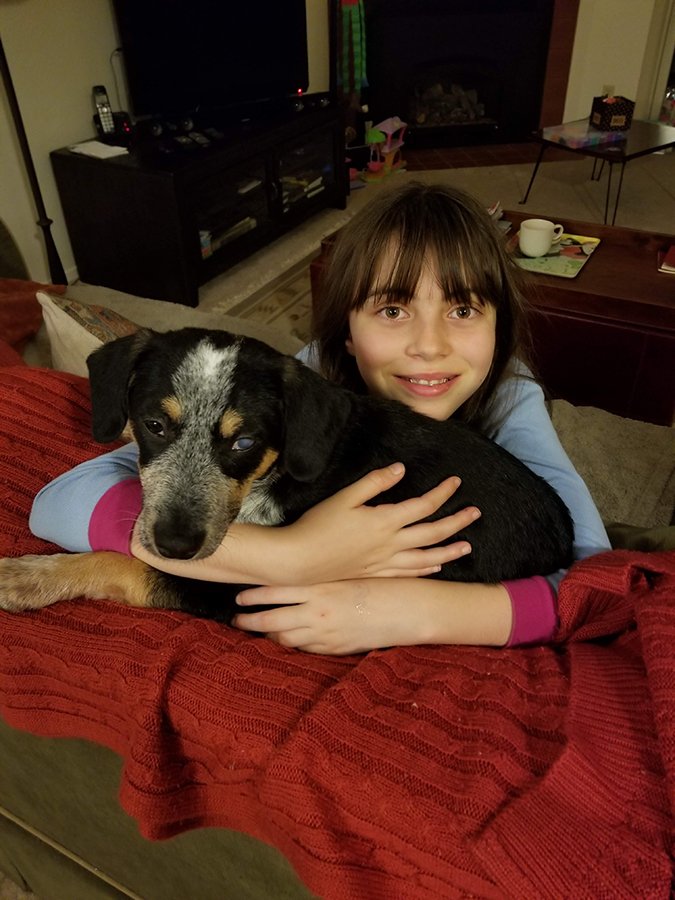
So, the bad news is, Odin has been to my local vet five times (including the first visit for treatment of the demodectic mange, and several visits to see the vet who has a special interest in ophthalmology) and the UCD VMTH four times (including the first visit to assess the whole litter’s hyperflexed joints early on, when they were still recovering from malnutrition).
But the AMAZING news is that YOU GUYS have made all this veterinary care possible, and it hasn’t bankrupted me or hurt the ability of my local shelter to help other dogs. I did ask if any of you felt so moved, if you could donate to the Northwest SPCA (the legal owners of the puppies), and enough of you did that their medical care has been completely covered by your donations.
And it’s not just this litter of deserving puppies that your generous contributions have helped.
Two weeks ago, I was at my local shelter right after it closed to the public, staging some large crates for the transport of three large dogs. The Northwest SPCA shelter has been so heavily impacted by the Camp Fire – we have had far more than the usual number of owner-surrendered dogs and unclaimed cats – that they put out the call to a number of other northern California shelters for help in getting animals adopted.
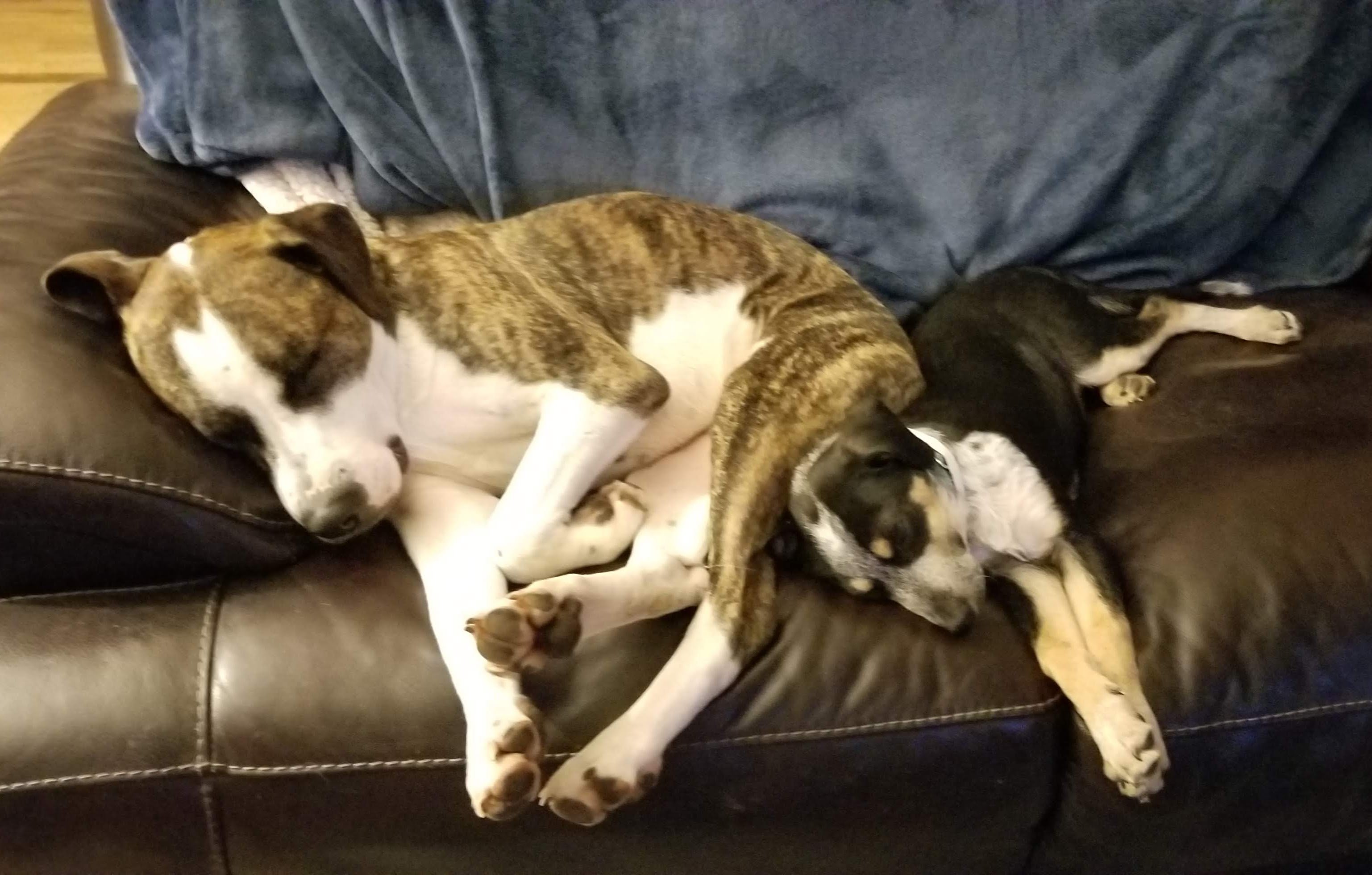
A friend and I volunteered to transport three large dogs to one shelter in the San Francisco Bay area, and we had to load up and leave at about 7am to meet volunteer drivers from the other end. While I was getting the crates ready, I heard some kennel attendants talking about a tiny blind Chihuahua that the shelter had for adoption; it seems they were trying everything, but she wouldn’t eat. I asked to see her, and after taking just one look, asked the shelter manager if I could foster her over the weekend (at a minimum). The tiny dog was already quite thin, but when she refused some freeze-dried chicken treats from my treat pouch and some canned cat food, I knew she needed some extra TLC.
I kept her at home that night, offered her everything under the sun, but she just wouldn’t eat. She drank water, but wouldn’t eat the next day, either; she just stayed on my lap curled in a little ball during the next day’s transport. Knowing that there was still a positive amount from your donations in the shelter’s medical fund, I asked the shelter director if I could take her to the vet for some diagnostics and further care, and the director agreed.
Blood and urine tests were normal, but the vets were stumped by the tiny dog’s disinterest in food and rapidly declining condition, despite the administration of IV fluids and nutrients – until an ultrasound revealed a large mass on her pancreas and an accumulation of fluid in her abdomen. Thirty hours of care, lots of medications, lots of tests – and the prognosis was absolutely dismal. The vets who saw her and the shelter director agreed that she should be euthanized – and though this was absolutely NOT what I had hoped for when I took the little smidge to the vet, I was glad that her condition was at least diagnosed faster than it would have been in a crowded shelter over a weekend and her suffering ended sooner than later.
As I said to my friend who had driven her van during that weekend transport, and who called to ask about the tiny dog’s condition (it was she who started calling the little dog Smidge), fostering for an open-admission shelter is not for the faint of heart. And lately, it’s been absolutely heart-rending for me! It’s hardly ever like this, with so many sad outcomes. But when I think of the dozens and dozens of puppies I’ve fostered without incident or loss, I know that these recent experiences are outliers. Even so, the ability to obtain top-shelf medical diagnostics and treatment for these needy dogs, without either busting the shelter’s budget or my own, has meant so much – it makes me cry every time I think of it.
THANK YOU SO MUCH, all of you who have donated to the Northwest SPCA.
Disaster Preparation Training
Last weekend, I participated in the annual training session for the North Valley Animal Disaster Group (NVADG, pronounced colloquially as “nav-dag”) – the group that was so instrumental in rescuing, sheltering, and caring for hundreds of animals during and after the devastating Camp Fire in nearby Paradise, California. I was not always happy about the conditions and practices in the temporary shelters set up and run by NVADG – but the only way to have any credibility in critiquing the things that I didn’t like, and to (I hope) help craft changes in these practices in any future local disaster is to join the group officially and participate. I’ve taken the first step in that process, and plan to take more classes and workshops organized by the group.
New Year’s Resolutions
Progress report on my three resolutions: Still haven’t brushed my dogs’ teeth. Am taking my first private agility lesson with Woody this week. And am signing up for another class to work on a Canine Good Citizen title with Woody, too.


